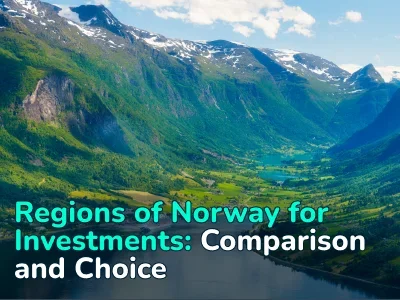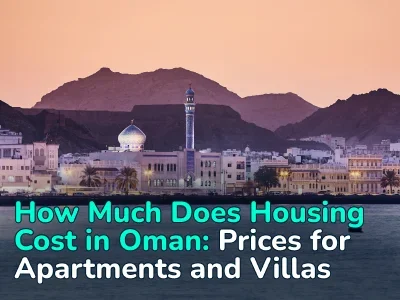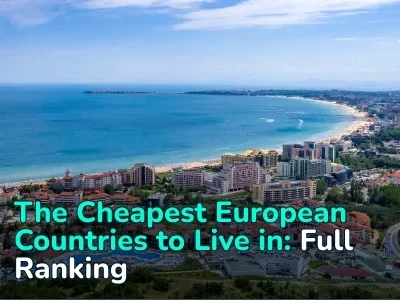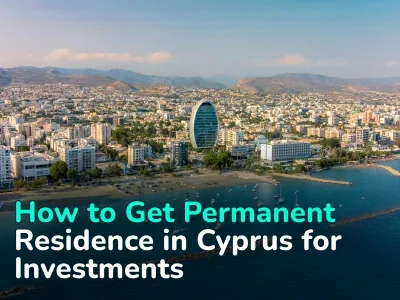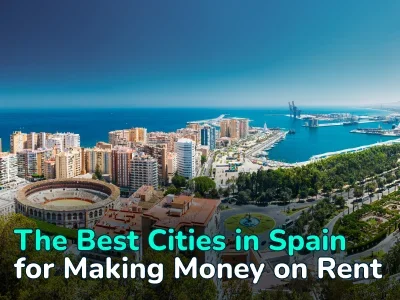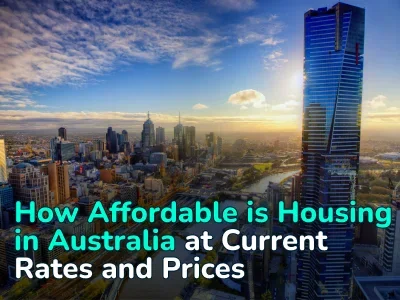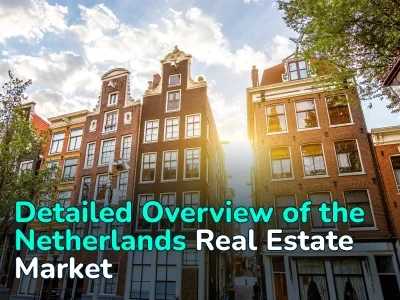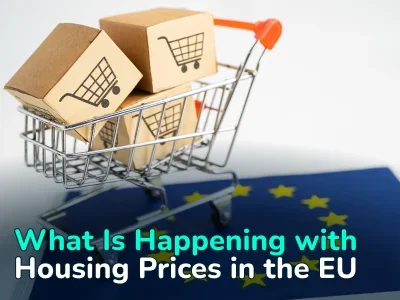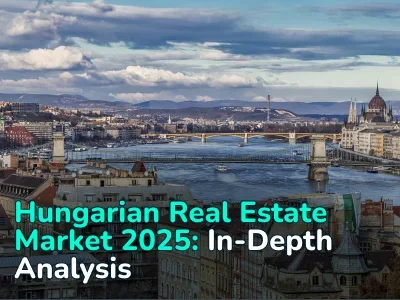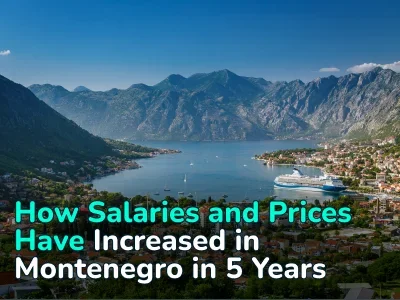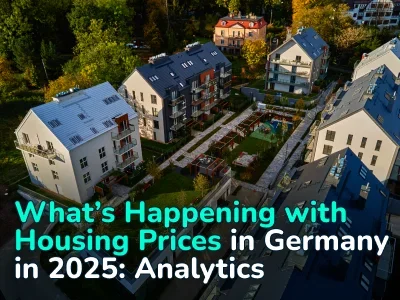
The rise in prices for new buildings has stopped. Is it time to invest in real estate in Croatia? Analysis and trends of the Croatian primary market in analytics from REALTING
In 2023, Croatia became a full member of the European Union. And if admission to the Schengen zone was perceived positively by the residents of the country, then the change of currency from the local kuna to the euro caused a rather mixed reaction. At the same time, one of the key factors making Croatia an attractive destination for investment in residential real estate remains the developing tourism sector in the coastal regions. Read about how the primary real estate market responded to the latest changes in Croatia in the latest REALTING analytics.
Tourism, construction and government programs — how demand for Croatian real estate is formed
According to Državni zavod za statistiku, from 2019 to 2022, 19 563 residential buildings were built in Croatia, and over 4 years the number of housing commissioned has constantly increased, despite the pandemic in 2020, developers apparently continued their activities, adapting to new working conditions. This has also contributed to the relative stability of the construction industry. The most completed projects were registered in 2022 — 5660. Compared to the previous year, the increase was 13%.
Zadar and Istria are the regions where the most housing was built in 2022, accounting for 17% and 13% respectively of all residential buildings built in the country. Both areas attract many visitors from different countries for their beaches and historical heritage. Active development of territories can be noted in the regions of Splitsko-Dalmatinska, the capital of Croatia and Primorsko-Goranska — each region accounts for from 7% to 8% of completed housing.
The demand for real estate in Croatia is generated both by local residents and foreign investors. Like many European countries, Croatia has a program to assist in the acquisition and construction of first homes for young people; it has been implemented since 2017 in the form of subsidizing housing loans for the first five years of repayment.
The amount of the subsidy depends on the development index of the locality and ranges from 30% to 51%, and assistance in repaying the loan can only be received if the mortgage is issued for an amount not exceeding €1500/sq.m, or the maximum loan amount does not exceed €100 thousand. Citizens no older than 45 years of age who permanently reside in Croatia can take part in the program.
Such first home purchase programs typically increase demand for residential space among the population, which in turn motivates developers to increase construction volumes to meet increasing market demand.
It is also worth mentioning tourism, which contributes to the economic development and growth of the regions of Croatia, creating jobs in the service sector, entertainment, restaurant business, travel and transport, and also has a significant impact on the housing sector.
Croatia attracts a huge number of tourists every year: according to Državni zavod za statistiku, the number of foreign tourists (those who arrived and registered their stay at a residence establishment) in 10 months of 2023 exceeded 16,4 million. Probably, by the end of 12 months, this figure will approach pre-Covid 2019 value — more than 17,3 million tourists.
By the way, in 2020, restrictions and measures introduced to combat the spread of the virus reduced the number of foreign visitors by more than 3 times — to 5,5 million. And since 2021, the hospitality industry has been actively recovering: then 10,6 million people visited Croatia, and 2022 — 15,3 million
The significant influx of tourists to Croatia creates demand for various types of accommodation: hotels, inns, holiday homes, campsites, and also stimulates interest in the private rental housing market. Purchasing apartments, houses or villas for rent to tourists is one of the most common real estate investment models. Passive income in the form of rental payments accompanies the potential increase in property value in the long term.
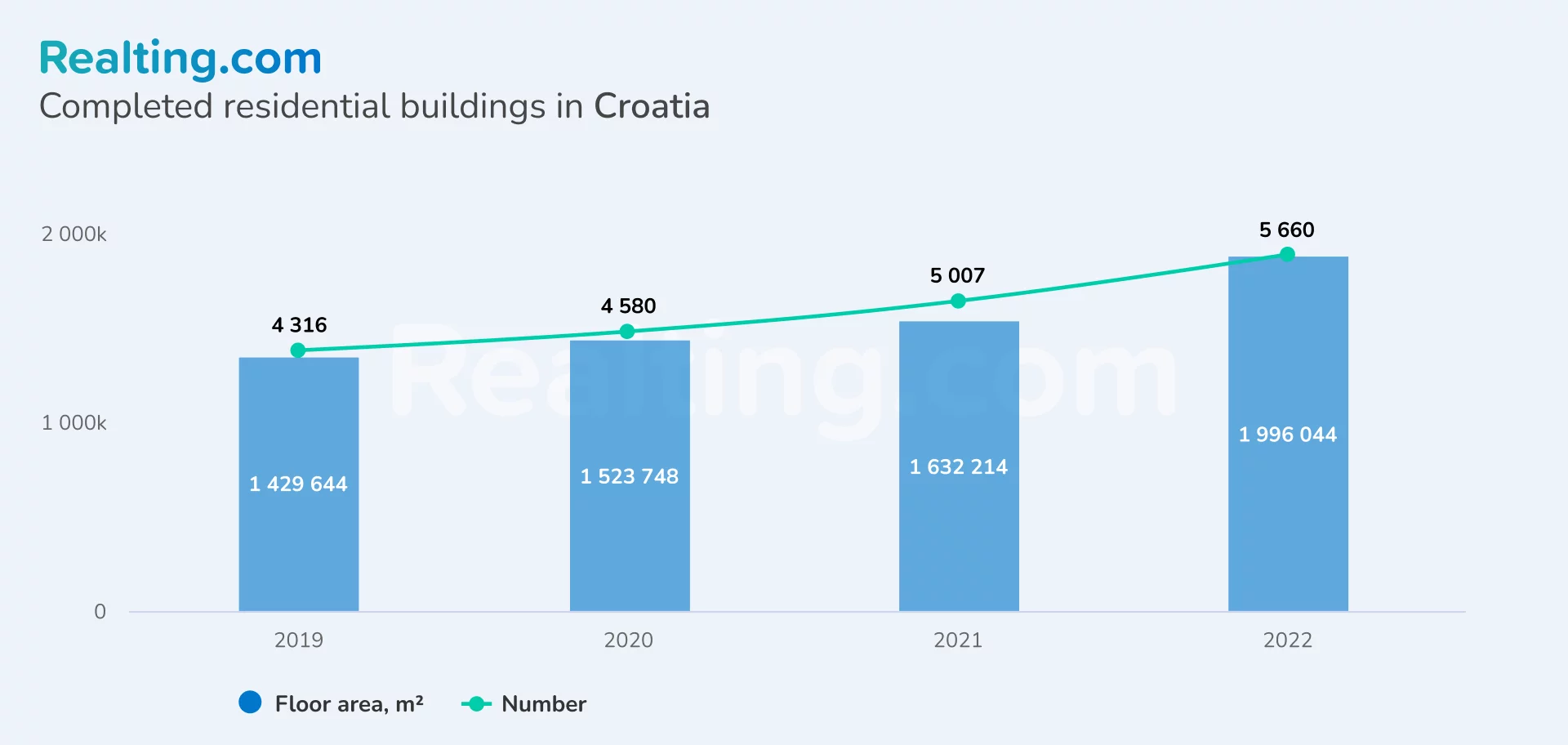
The rapid rise in prices has stopped
In accordance with Državni zavod za statistiku, data on the average price of sq.m on the primary market is aggregated into two groups: the capital of Croatia — Zagreb, and other locations.
Zagreb has always been more expensive than other settlements: the most significant increase occurred in the first half of 2022 — by 20% at once, and the highest average price of a sq.m. in the capital in the 2nd half of 2022 is €2742/sq.m. Over the 6 months of 2023, the price decreased by 4%, to €2633/sq.m.
The average price of housing in new buildings in other cities of Croatia increased by 24% over 1,5 years, and in the first half of 2023 it settled at €2048/sq.m. It is worth taking into account that the coastal areas of Croatia are not identified as a separate category, but it is obvious that a combination of factors such as limited supply, tourist and investment attractiveness leads to a dynamic increase in property prices here. Therefore, it is likely that the average price per meter in the coastal cities of Croatia will not be inferior to the capital, the same situation has developed, for example, in Montenegro.
By the way, in addition to the fact that Croatia joined the Schengen zone in 2023, another important change occurred — from January 1, 2023, the local currency Croatian kuna was replaced by the euro. It is expected that the currency change will contribute to economic stability, simplification of payments, and strengthening integration with the Eurozone. For a long time, the euro was an unofficial currency along with the kuna used in various industries, and many citizens invested their savings in the euro because they considered the currency more reliable.
However, many residents were concerned about the spontaneous increase in prices for goods and services, which, one might say, was justified. The reasons for this can be called both inflation and groundless price increases by stores. According to the European Central Bank, Croatia actually has one of the highest inflation rates: since January 2022, the consumer price index in Croatia has steadily increased, reaching its peak in November of the same year at 13%.
In 2023, the European Union’s policy to reduce inflation yielded results and the index in Croatia began to gradually decline — in November it amounted to 5,5%. Government authorities, in turn, carried out inspections in stores to identify unreasonable price increases. As a result of the violations discovered, namely incorrect rounding up or increasing prices by up to 50%, a quarter of all inspected stores were fined. It is also necessary to note the inflated prices at popular resorts in Croatia, which are mostly aimed at Europeans with a more solvent population.
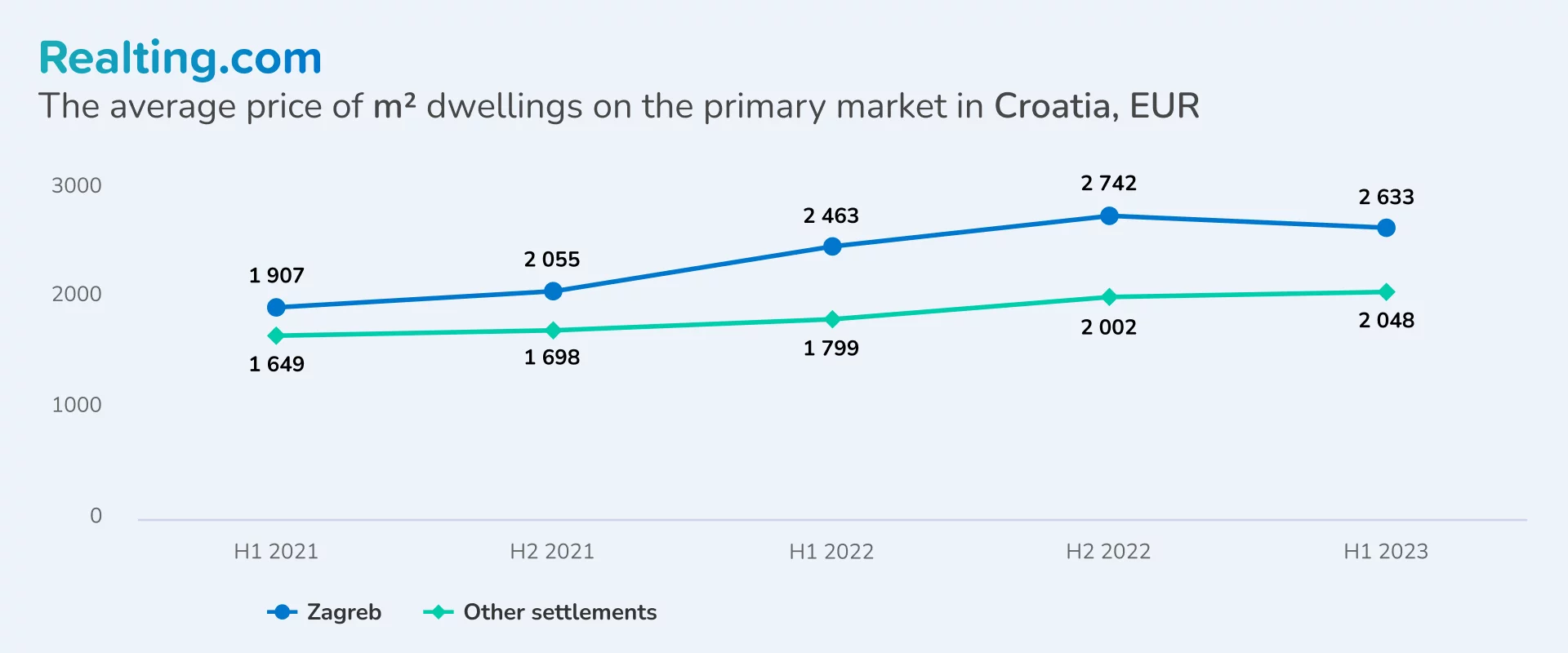
The European Union’s policy to reduce inflation has cooled both the Croatian economy as a whole and the real estate industry. The country’s construction industry is demonstrating resilience with a constant increase in the volume of completed buildings, and tourism is an important stimulus for regional development in Croatia, affecting the economy, infrastructure, and most importantly, investment activity. The entire Croatian real estate market is now influenced by a huge number of factors, so in the near future we can most likely expect a moderate rise in prices.
Author
Providing readers with quality analysis on global trends in the real estate market.









